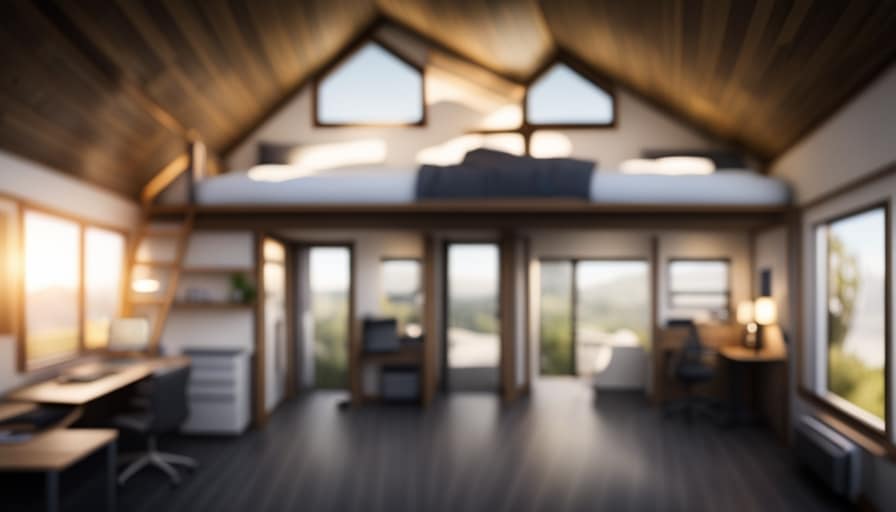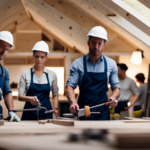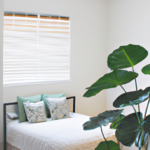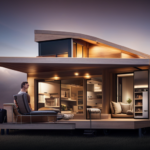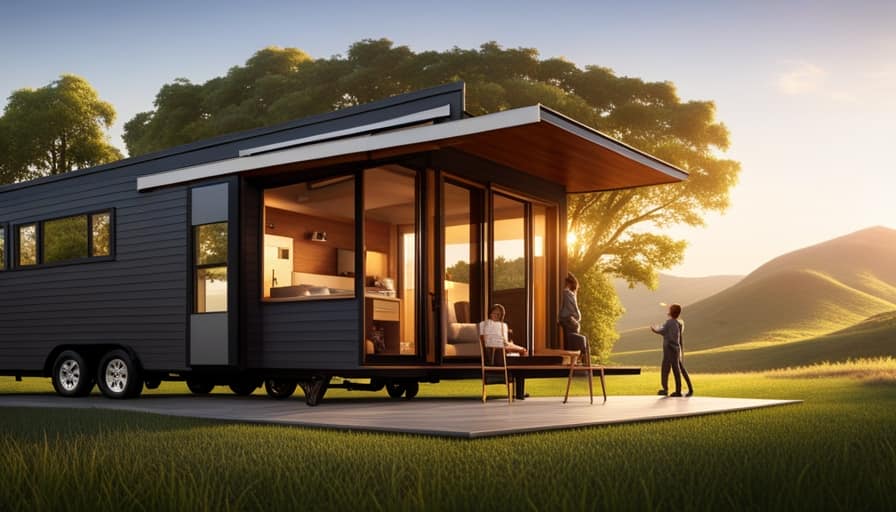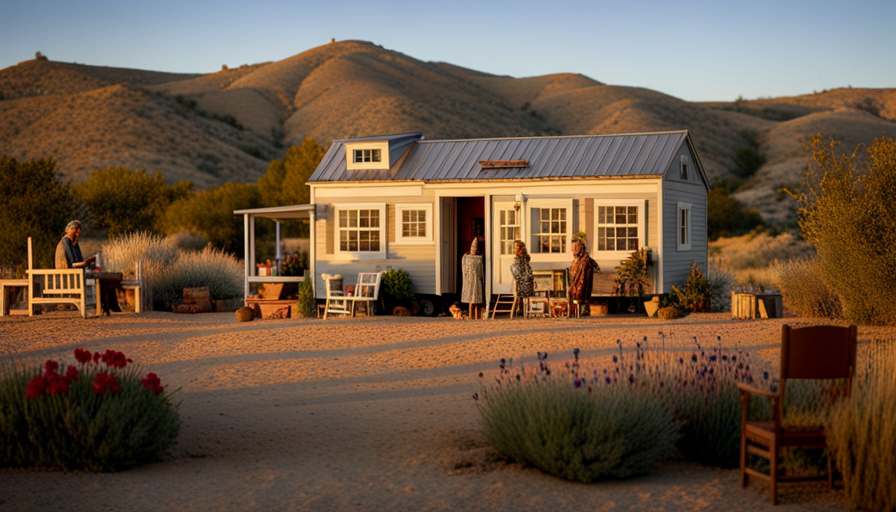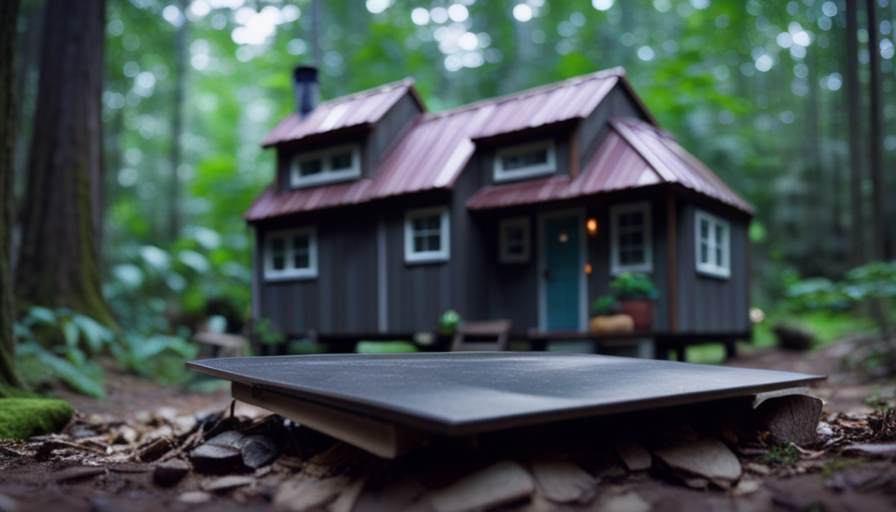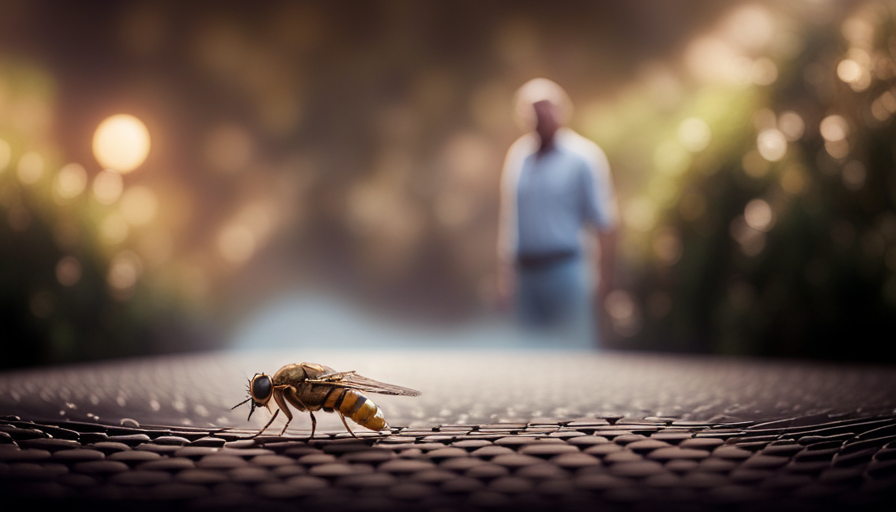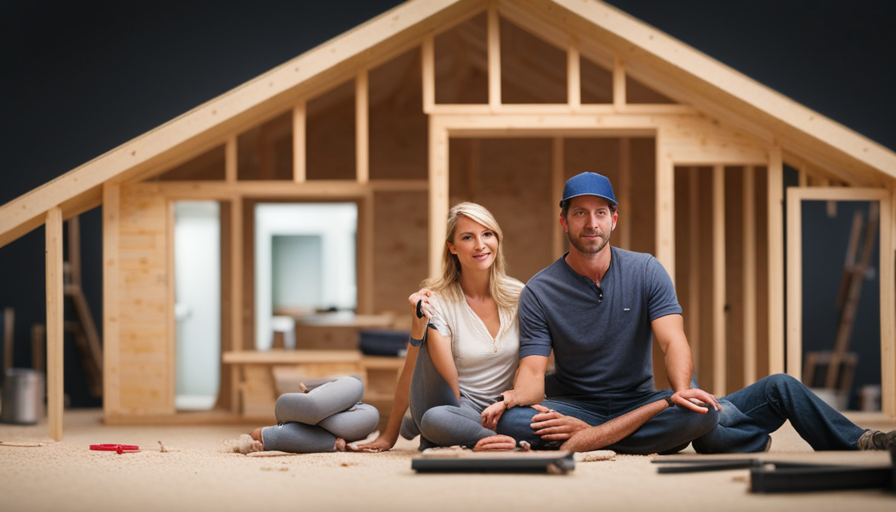Are you ready to start your journey into the world of tiny houses? You’re in the right place! Check out our list of the top 10 must-have items for constructing your own tiny house.
From design and layout to sustainable energy sources, we’ve got you covered. Discover efficient insulation, space-saving furniture, and safety measures to ensure your tiny home is both cozy and secure.
Get ready to create a space that’s not only functional, but also full of charm and character. Let’s dive in and make your tiny house dreams a reality!
Key Takeaways
- Incorporate large windows, skylights, and light-colored walls to maximize natural light and create a bright and airy atmosphere.
- Ensure a well-built foundation and structural integrity through regular maintenance and compliance with building permits.
- Focus on efficient insulation and ventilation to prevent heat loss, maintain good air quality, and reduce the need for artificial lighting.
- Utilize space-saving furniture and storage solutions, such as multifunctional furniture and vertical storage, to maximize the limited space in a tiny house.
Design and Layout
Let’s explore the key factors to consider when designing and laying out our own tiny house.
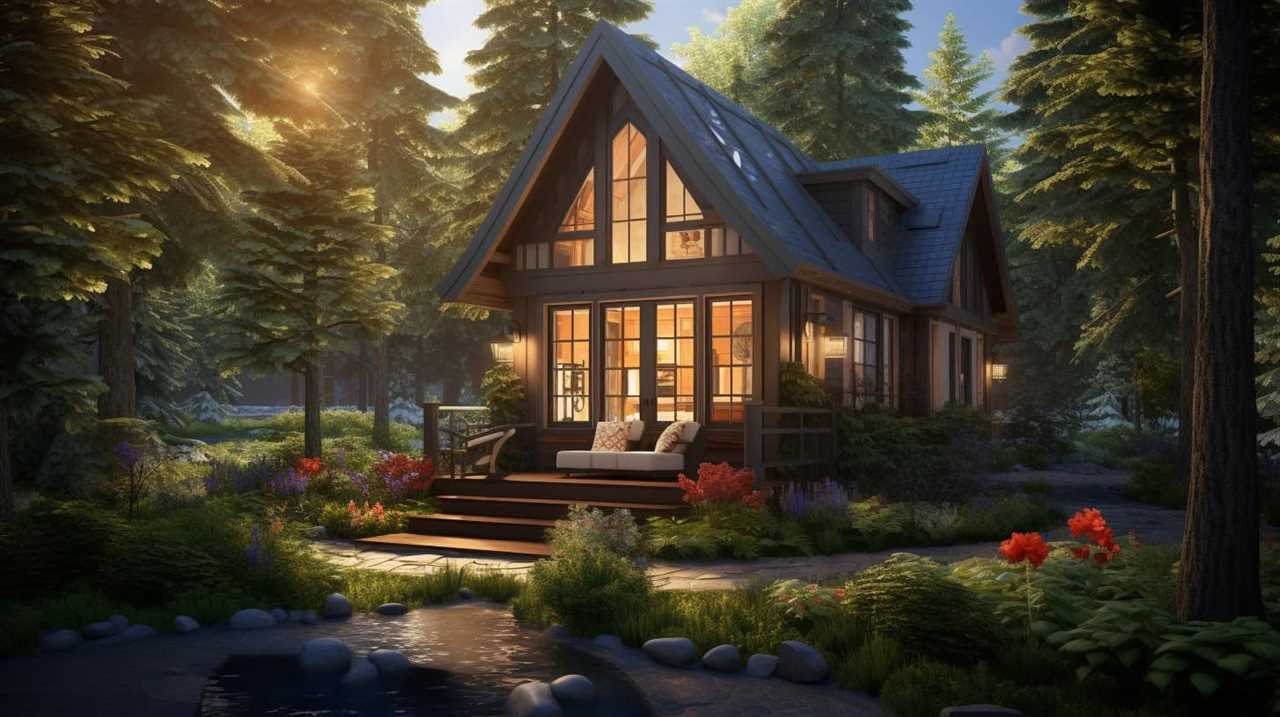
Tiny house aesthetics and maximizing natural light are two crucial elements that can greatly enhance the overall appeal and functionality of our small space. When it comes to creating a visually pleasing tiny house, we can experiment with different styles and materials to achieve the desired look. Incorporating elements like large windows, skylights, and light-colored walls can help maximize natural light and create a bright and airy atmosphere. This not only makes the space feel more spacious but also reduces the need for artificial lighting during the day. By focusing on these aspects, we can create a tiny house design that’s both visually appealing and practical.
Now, let’s move on to the next important aspect of building our own tiny house: foundation and structural integrity.
Foundation and Structural Integrity
Before we delve into the details of building our own tiny house, it is important to understand the significance of a strong foundation and structural integrity. A well-built foundation is essential for the long-term stability and durability of your tiny house. It not only supports the weight of the structure but also protects it from moisture and other external elements. Regular foundation maintenance is crucial to prevent any potential issues such as cracks or settling. Additionally, obtaining the necessary building permits is vital to ensure compliance with local regulations and to avoid any legal complications in the future. To help you understand the importance of a strong foundation and structural integrity, here’s a table highlighting key points:
| Key Points |
|---|
| Provides stability and support for the structure |
| Protects against moisture and external elements |
| Regular maintenance prevents potential issues |
| Building permits ensure compliance with regulations |
Now that we understand the significance of a strong foundation, let’s move on to the next essential element of building a tiny house – efficient insulation and ventilation.
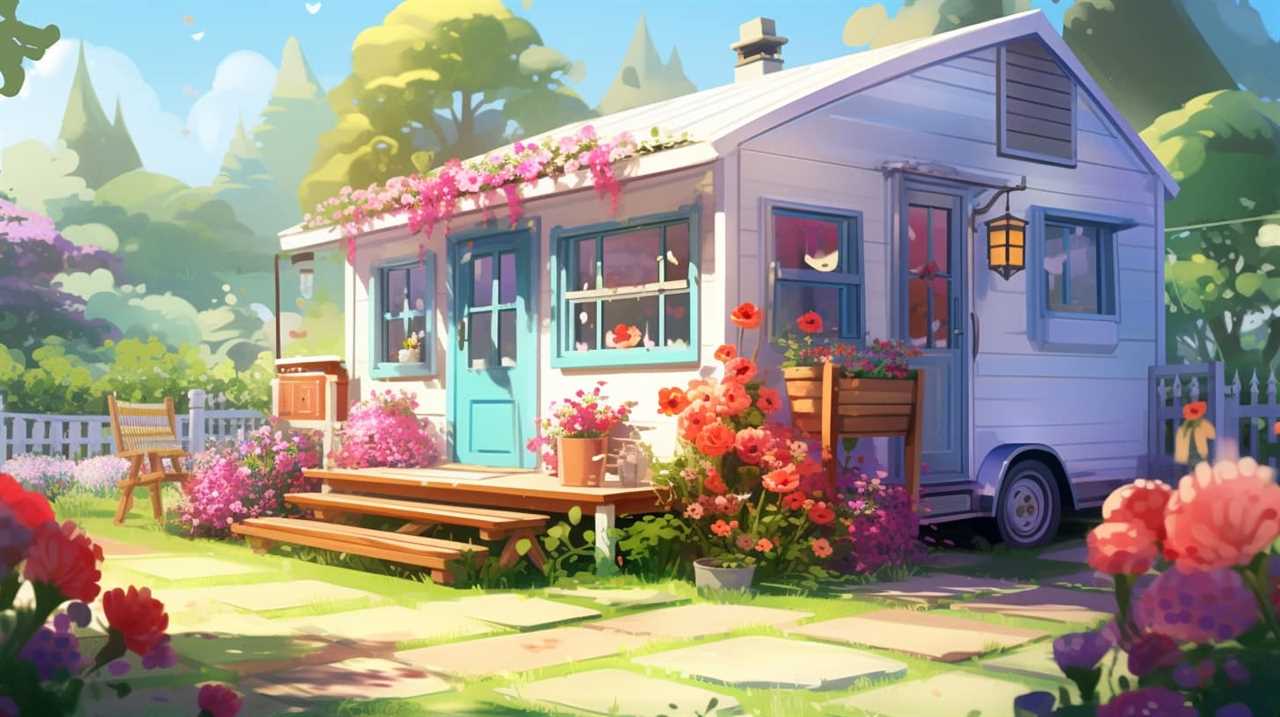
Efficient Insulation and Ventilation
To achieve optimal comfort and energy efficiency, we need to prioritize efficient insulation and ventilation in our tiny house.
Efficient insulation is crucial for maintaining a comfortable indoor temperature and reducing energy consumption. By using materials with high insulation properties, such as spray foam or cellulose insulation, we can prevent heat loss in the winter and heat gain in the summer.
Proper ventilation is essential to maintain good air quality and prevent the buildup of moisture and mold. Installing ventilation systems, such as exhaust fans or heat recovery ventilators, helps to circulate fresh air and remove stale air.
It’s also important to consider the placement of windows and doors to allow for natural ventilation and airflow.
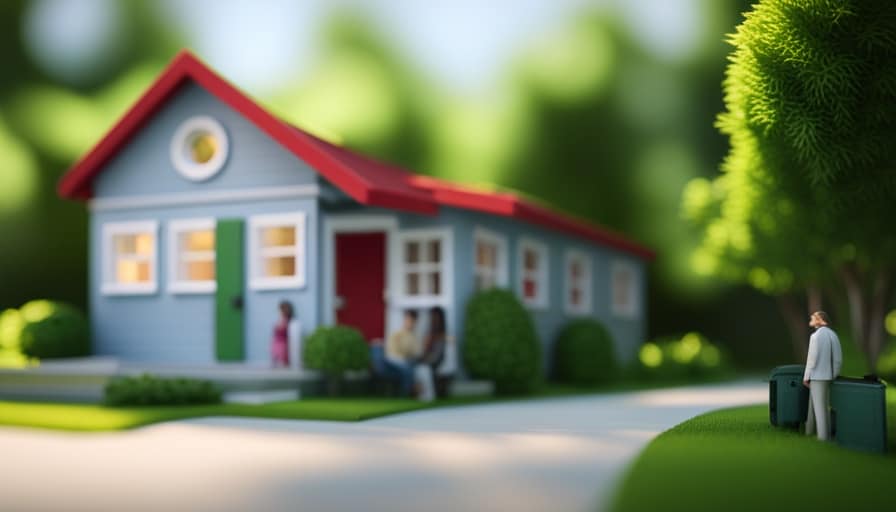
Space-Saving Furniture and Storage Solutions
We need to find creative ways to maximize our limited space by utilizing space-saving furniture and storage solutions. When it comes to tiny house living, every inch counts. Here are some innovative ideas to help you make the most of your compact living space:
-
Multifunctional furniture: Choose pieces that serve multiple purposes, such as a sofa that can transform into a bed or a coffee table with hidden storage compartments.
-
Vertical storage: Utilize the vertical space in your tiny house by installing wall-mounted shelves, hanging organizers, or even a pulley system to store items overhead.
-
Built-in cabinets: Opt for built-in cabinets and drawers to maximize storage potential without taking up valuable floor space.

-
Foldable furniture: Invest in foldable chairs, tables, and desks that can be easily tucked away when not in use.
-
Under-bed storage: Utilize the space under your bed by using storage containers or drawers to keep items neatly organized and out of sight.
Sustainable Energy Sources
Using renewable energy and implementing energy-efficient systems are key for creating a sustainable and eco-friendly tiny house. In order to power your tiny house, you can consider installing solar panels or wind turbines.
Solar panels are a popular choice for generating electricity, as they harness the power of the sun. They can be installed on the roof of your tiny house and can provide electricity to power your lights, appliances, and other electrical devices.

Wind turbines, on the other hand, use the power of the wind to generate electricity. They can be installed in a windy location near your tiny house and can also contribute to your energy needs.
By utilizing these sustainable energy sources, you can reduce your reliance on traditional energy sources and lower your carbon footprint.
Now, let’s move on to discuss the next important aspect of your tiny house: plumbing and water systems.
Plumbing and Water Systems
One of the essential aspects of building our own tiny house is ensuring a reliable and efficient plumbing and water system. Proper plumbing installation is crucial to ensure that our tiny house has access to clean water and efficient waste disposal.
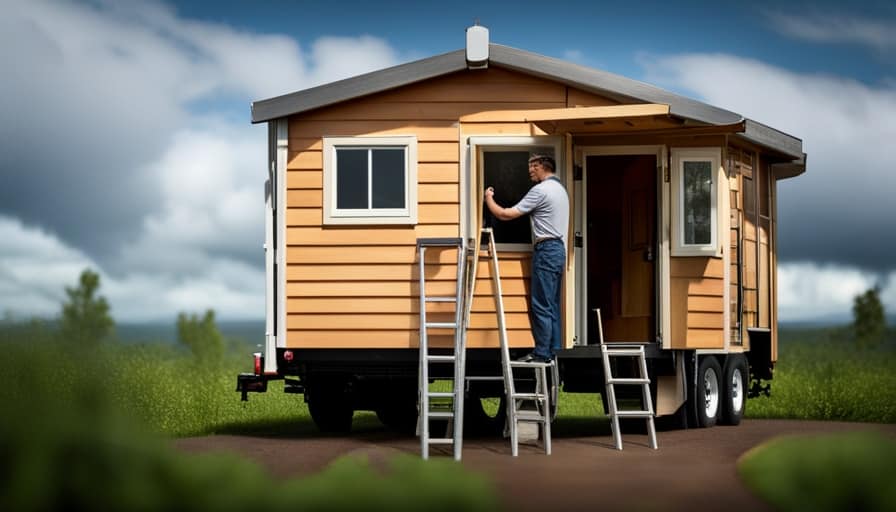
Here are some important points to consider:
-
Water source: We need to determine the source of our water, whether it’s through a well, city connection, or rainwater harvesting.
-
Water conservation techniques: Implementing water-saving fixtures such as low-flow toilets and faucets, as well as collecting and reusing greywater, can help us reduce water consumption.
-
Waste disposal: Installing a composting toilet or a septic system is necessary for proper waste management in our tiny house.
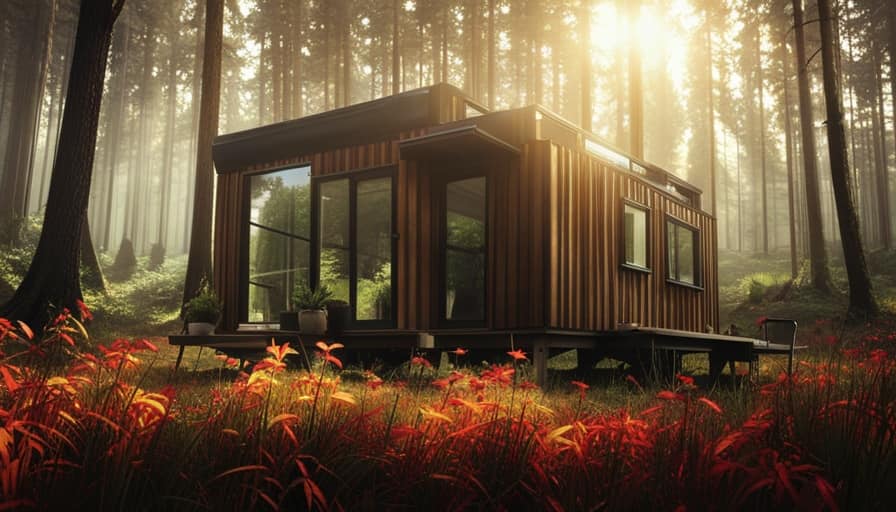
Kitchen Essentials
And, let’s not forget about the kitchen essentials for our tiny house. In order to maximize space and efficiency, proper kitchen organization is crucial.
Start by investing in compact appliances such as a mini-fridge, a two-burner cooktop, and a small microwave. Opt for stackable or collapsible kitchenware to save on storage space.
Magnetic knife racks and hanging pot racks can help free up counter and cabinet space. Utilize vertical wall space with floating shelves or pegboards to store utensils, spices, and cookware.
When it comes to meal preparation, consider multi-purpose tools like a blender that can double as a food processor. Lastly, don’t forget to incorporate clever storage solutions like under-counter pull-out drawers for easy access to pantry items.
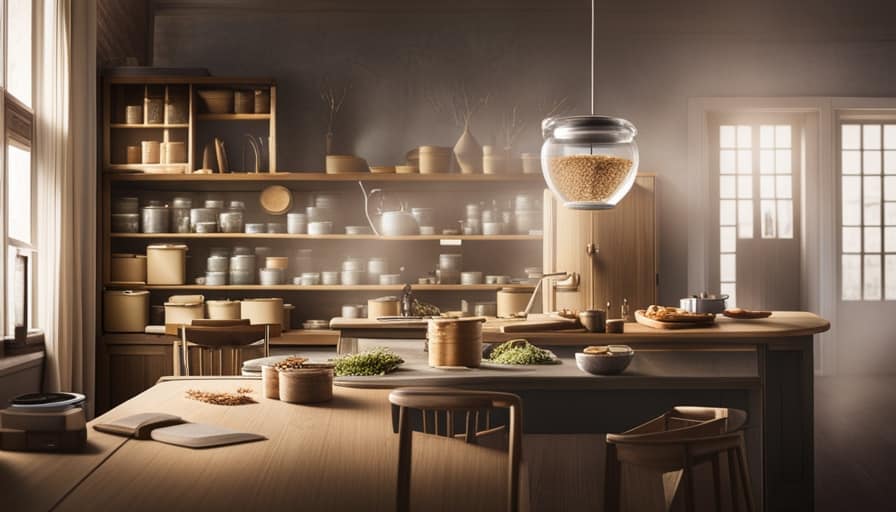
Bathroom Essentials
For our tiny house, we’ll need a toilet and a shower. When it comes to bathroom design, it’s important to maximize every inch of space. Here are some essentials to consider:
-
Space-saving fixtures:
-
A compact toilet with a built-in sink can save space and water usage.
-
A corner shower with a sliding door can make the most of limited bathroom space.

-
Eco-friendly fixtures:
-
Consider installing a low-flow toilet and showerhead to conserve water.
-
Opt for energy-efficient lighting to minimize electricity usage.
Safety and Security Measures
When it comes to building our own tiny house, ensuring safety and security measures is of utmost importance.
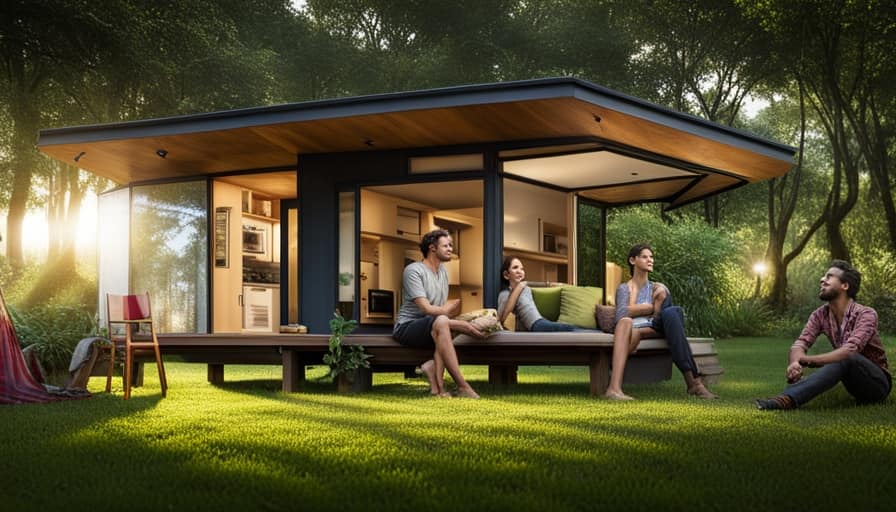
Two key aspects to consider are fire prevention measures and intrusion prevention techniques.
By implementing fire-resistant materials, smoke detectors, and fire extinguishers, we can minimize the risk of fire incidents.
Additionally, installing sturdy locks, security cameras, and motion sensor lights can help deter potential intruders and enhance the overall security of our tiny house.
Fire Prevention Measures
We need to prioritize fire prevention measures to ensure the safety and security of our tiny house. When building our own tiny house, it’s crucial to have the necessary tools and equipment in place to prevent and combat fires.
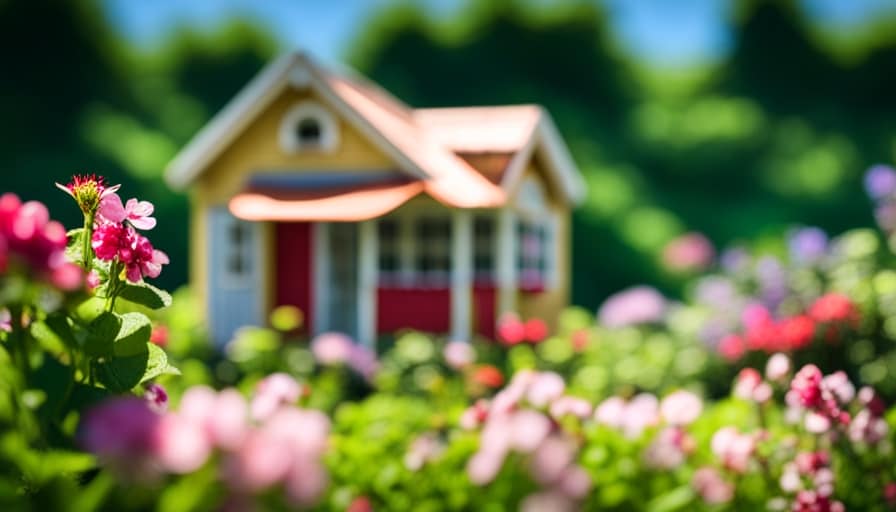
Here are two essential fire prevention measures to consider:
-
Fire extinguishers: Having multiple fire extinguishers strategically placed throughout the tiny house is essential. These extinguishers should be easily accessible and regularly maintained. They provide a quick and effective way to extinguish small fires before they can spread and cause significant damage.
-
Smoke detectors: Installing smoke detectors in key areas of the tiny house is vital for early detection of smoke and fire. These detectors should be tested regularly to ensure they’re in good working condition. They provide an early warning system, allowing us to take immediate action and evacuate if necessary.
Intrusion Prevention Techniques
One of the most important aspects of building our own tiny house is implementing three effective intrusion prevention techniques to ensure the safety and security of our living space. Intrusion detection and home security measures are crucial to protect our tiny house from potential threats.
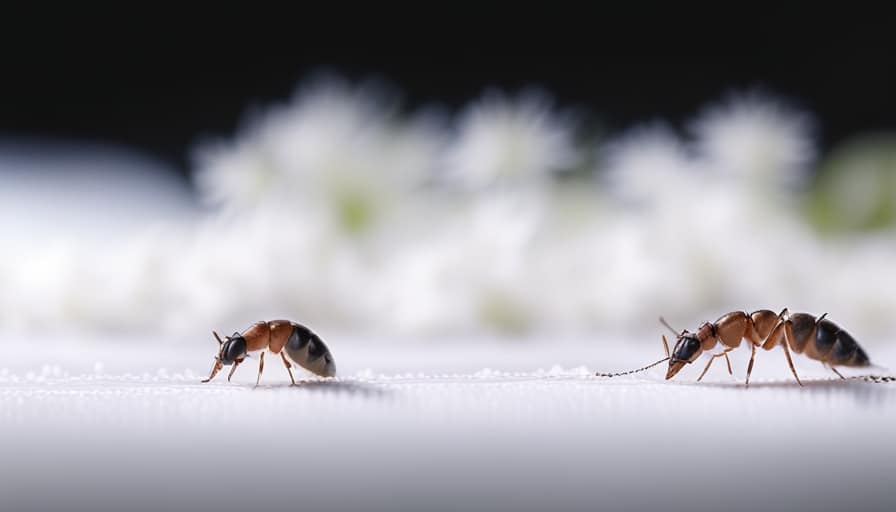
Here are three essential techniques to consider:
-
Secure Doors and Windows: Install sturdy doors with deadbolt locks and reinforce windows with security film or bars to prevent unauthorized entry.
-
Motion-Activated Lighting: Install motion-activated lights around the perimeter of the house to deter intruders and provide visibility at night.
-
Security System: Install a reliable security system that includes cameras, sensors, and alarms to detect and deter any unauthorized access.
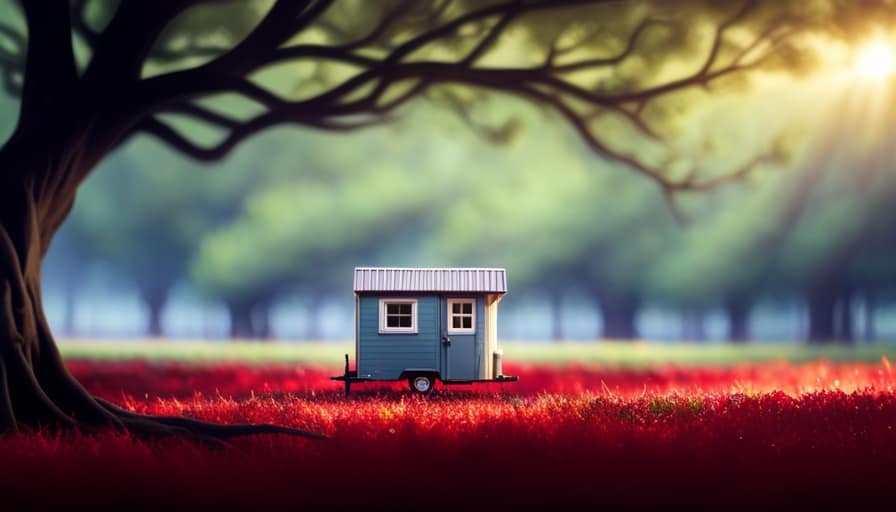
Exterior Features and Curb Appeal
Adding a fresh coat of paint can instantly transform the exterior of our tiny house, making it more visually appealing and increasing its curb appeal. Here are some exterior design and landscaping ideas to enhance the overall look of our tiny house:
-
Colors: Choose a color scheme that complements the surroundings and reflects our personal style. Consider using neutral tones for a timeless and elegant look, or opt for bold and vibrant colors to make a statement.
-
Siding: Select durable and low-maintenance siding materials such as vinyl, fiber cement, or wood. These options not only provide protection but also add texture and visual interest to the exterior.
-
Landscaping: Create a welcoming entrance with well-manicured plants, flowers, and shrubs. Use decorative elements like pathway lighting, potted plants, and a charming mailbox to add a touch of personality.
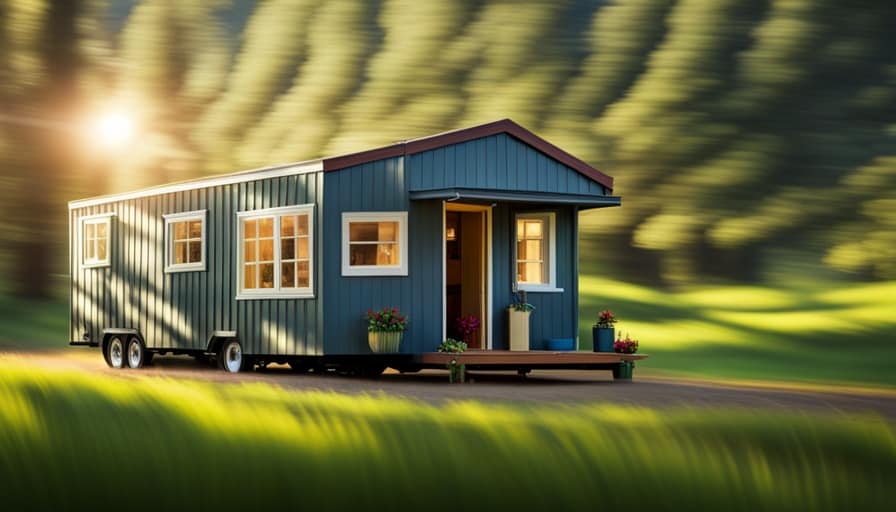
Frequently Asked Questions
What Are the Legal Requirements and Permits Needed to Build a Tiny House?
To build a tiny house, we need to consider zoning regulations and building codes. It’s important to research and obtain the necessary permits to ensure compliance with local laws and regulations.
How Do I Choose the Right Trailer for My Tiny House?
Choosing the right trailer for a tiny house can be overwhelming, but it’s crucial for the design and functionality. Factors to consider include size, weight capacity, type, material, wheel and axle configuration, hitch compatibility, building codes, features, cost, research, and professional advice.
Can I Build a Tiny House on a Slope or Uneven Terrain?
Yes, building a tiny house on a slope or uneven terrain can pose some challenges. However, with the right construction techniques and proper planning, it is possible to build a stable and functional tiny house in such conditions.
Is It Possible to Add a Second Floor to a Tiny House?
Yes, it is possible to add a second floor to a tiny house. By carefully planning the layout and ensuring proper structural support, you can maximize space and even add insulation for better energy efficiency.

Are There Any Restrictions on Where I Can Park My Tiny House?
Oh boy, let me tell you about the restrictions on parking your tiny house! Zoning regulations can be a pain, but there are some awesome tiny house communities popping up where you can park legally.
Conclusion
Building a tiny house is like embarking on a grand adventure. Just like a ship needs a sturdy hull, a tiny house requires a solid foundation and structural integrity.
The insulation and ventilation serve as the sails, keeping the interior comfortable.
Space-saving furniture and storage solutions act as the crew, optimizing every inch of space.
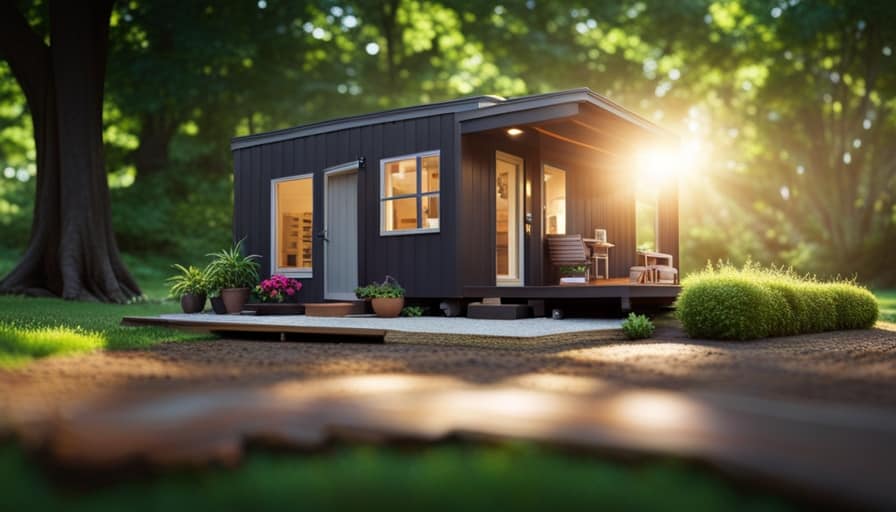
Sustainable energy sources are the wind in our sails, powering our tiny abode.
With the right essentials, your tiny house will be a vessel of comfort and sustainability, ready to sail towards a brighter future.
I’m Theodore, and I love tiny houses. In fact, I’m the author of Tiny House 43, a book about tiny houses that are also tree houses. I think they’re magical places where imaginations can run wild and adventures are just waiting to happen.
While tree houses are often associated with childhood, they can be the perfect adult retreat. They offer a cozy space to relax and unwind, surrounded by nature. And since they’re typically built on stilts or raised platforms, they offer stunning views that traditional homes simply can’t match.
If you’re looking for a unique and romantic getaway, a tree house tiny house might just be the perfect option.

